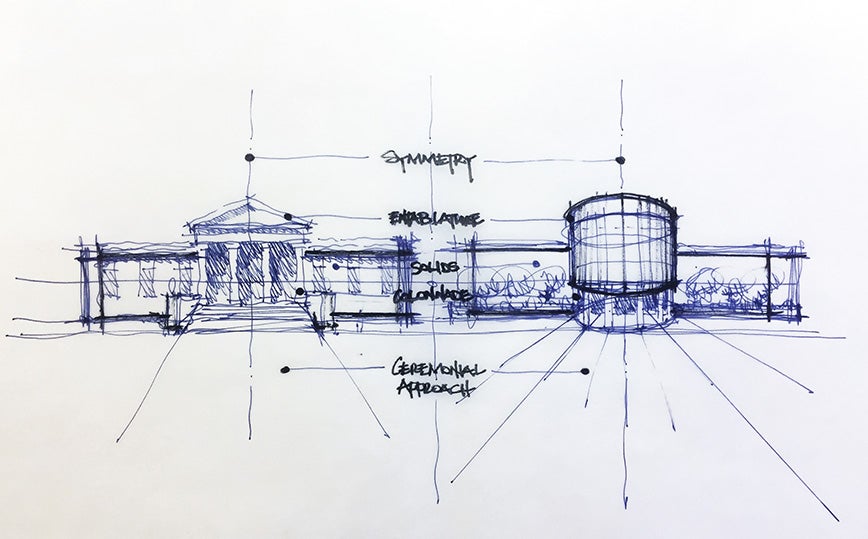
The Intricacies of Courthouse Design: Helping Deliver Democracy and Embody Justice
When most people think about courthouse design, you don’t think much about the ability to see jurors’ facial expressions, the height of the judge’s bench, or how to get in and out of the courtroom. But Kate Diamond, design director in HDR’s Los Angeles architecture studio, thinks about all of those details with unbridled passion. We recently sat down with Kate to hear her thoughts on the intricacies of court design.

Q: When designing a courthouse, what things must you consider first?
All good courthouse design starts with the courtroom. And while a high percentage of cases are resolved prior to their court date, the courtroom is a critical part of our democracy. It is a place where serious decisions are made that impacts individuals, families, communities, and our interpretation of the law. The courtroom is the place where the three separate circulation paths of a courthouse meet — the public path, the restricted path for judges, their staff and jury members, and a secure path for inmates and in-custody defendants.
The design of the courtroom is driven by functional requirements such as clear sightlines and good acoustics, architectural traditions starting with early one-room courthouses and continuing to the Supreme Court, and modern thinking about the evolution of justice towards a more restorative model. We use multiple tools, including courtroom models, three-dimensional computer walk-throughs and full-scale bench mock-ups, to make sure the courtroom will work for multiple judges. Only after they have kicked the tires and approved the design do we finalise the drawings.
Q: From a design standpoint, what similarities or differences are there between varying types of courthouses?
Every court in different jurisdictions — U.S. federal, state, or municipal — is organised differently, so the first thing you have to understand is the court’s structure: How do they conduct their operations and what are their standards? Additionally, many courts are exploring specialty calendars such as veterans or drug courts where the interaction and the messaging of restorative justice may impact the design of the bench and the well. It is always important to balance the desire for unique specialty courtrooms with the flexibility needed over the long life of a civic building.
As the cost of courthouse construction continues to escalate, another tradition that is being challenged is whether each Judge “owns” their own courtroom and whether their chambers need to be located directly behind “their courtroom.” The usage of federal courtrooms is significantly different from the high-traffic municipal, county and state courts where judges spend the majority of their day in their courtroom.
Additionally, while it is often met with resistance, some courts do consider colocating the chambers such that judges can share support staff. As with any program-driven project, a court architect has the responsibility to listen carefully to both the users and those responsible for operating the facility and at the same time offer them best practice options that they may have not previously considered. The best process delivers a design exceeds the client’s expectations and serves them well for decades to come.
Q: How does courthouse design impact the community?
While all of my design of courthouses starts from the inside-out, it is equally important to consider the design from the outside-in. Every courthouse should be a significant architectural presence that will engage in the civic dialogue of its site, embodying the presence of justice in a specific community. The design must be sensitive to the past, present and future of the site and context, celebrating history and culture. The perfect courthouse design for downtown Omaha, Nebraska, is not the right design for Hidalgo, Texas. And the right imposing expression for a criminal courthouse is probably not the right design for a family or juvenile courthouse.
We work with each of our clients to understand their community and deliver a design that expresses a shared vision of a better future where the new courthouse will contribute to the ongoing vitality of the city. When we design a courthouse, it’s humbling to think about the importance of this place to the people who walk through the doors. The design should deliver open, beautiful, safe and accessible spaces that are essential to the health of our democracy and celebrates every citizen's access to justice.

